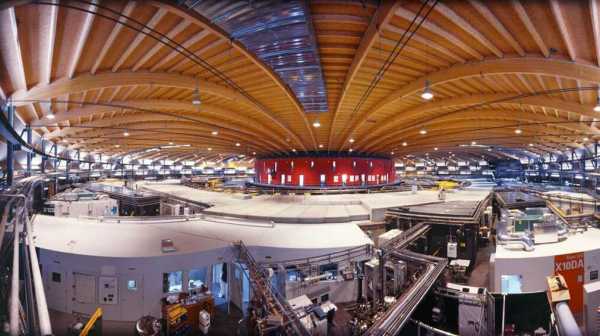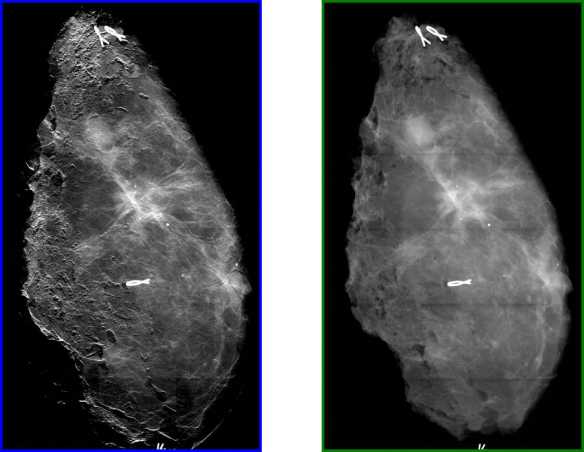Renaissance of X-rays
ETH Professor Marco Stampanoni played a major role in advancing X-ray microscopy. Now, scientists can even shoot three-dimensional and extremely high-resolution films.
These film images drew worldwide attention: powerful muscles hidden within the thorax of a fly, which flex and relax 120 times a second – magnified using a microscope and displayed in incredible detail. By way of joints that are among the most complex in the natural world, these muscles power the insect’s wings. The films also show additional tiny steering muscles, which precisely control each wingbeat to determine the direction of the fly’s flight.
Image gallery: Renaissance of X-rays



These three-dimensional, extremely high-resolution moving pictures of the bluebottle’s flight apparatus are the results of a collaboration between Marco Stampanoni, professor at ETH Zurich and group head at the external page Paul Scherrer Institute (PSI) in Villigen, and research colleagues at Imperial College London and the University of Oxford. Stampanoni counts this as one of his personal research highlights of the past year.
"We can map structures that would appear blurry on a conventional X-ray image."Marco Stampanoni
3D movies with a resolution of just a few micrometres are an excellent example of what researchers can achieve with X-rays today, 120 years after they were discovered by Wilhelm Conrad Röntgen. They still bear his name in German: Röntgenstrahlung, or “Röntgen rays.” Stampanoni belongs to a group of scientists that have made definitive strides over the past few years in advancing X-ray microscopy. Today, the 41-year-old native of Ticino spends most of his working hours at the external page Swiss Light Source (SLS) at PSI – where he can produce high-resolution 3D images of the interior of essentially anything he is putting under his microscope.
The SLS produces extremely intense light known as synchrotron radiation, which makes it possible to take such precise measurements – and even film footage – of moving objects like blow-flies. “A very intense X-ray radiation strikes the object under study each second,” explains the ETH professor, “and this allows us to take measurements with extremely short exposures. All we need is a few milliseconds for a high-resolution image.”
Generating the synchrotron radiation requires a large-scale facility like the SLS. “This radiation is also produced by CERN’s Large Hadron Collider (LHC) in Geneva, for example, but there it’s an unused by-product, since the LHC was built for a different purpose,” Stampanoni explains, adding: “The SLS, by contrast, was built specifically to use synchrotron radiation.” Although the synchrotron radiation is highly intense, it is invisible to the human eye – it lies in the same part of the spectrum as X-rays and short-wave UV radiation. The reasons why scientists call this radiation “light”, and consequently why SLS stands for “Swiss Light Source”, are historical but also physical. One is that X-rays “shine through” objects. Another is that electromagnetic radiation is essentially the same across the entire spectrum – from gamma rays to X-rays, visible light to microwaves and radio waves. All these types of radiation differ only in wavelength.
Conventional X-rays taken further
In addition to their intensity, the X-rays produced at the synchrotron light source offer another advantage: they are coherent, meaning they consist of waves with a constant phase difference. This coherence is a crucial requirement for what’s known as phase-contrast X-ray imaging, a refinement to conventional X-rays that is currently the subject of intense research. Phase-contrast X-rays can provide an even more detailed view of the interior of the object under study. This is another area where Stampanoni focuses his research.
In conventional absorption imaging, X-rays are directed at an object and a measurement is taken of how many penetrate through to the other side. Bones, for example, significantly absorb X-rays, whereas soft tissues allow them through. If structures inside an object absorb X-rays to a much greater or lesser degree than their surroundings, conventional X-ray techniques can make them visible.
Phase-contrast sensitive devices, in addition to the conventioal absorption signal, detect whether X-rays are slightly deflected in the object’s interior as a result of scattering and refraction phenomena. “We can use that to generate very sharp, high-contrast images and map structures in the tissue that would be blurred or even invisible using conventional X-ray technology,” Stampanoni explains.
Possible use in mammography
Until recently, scientists who wanted to work with coherent radiation that is so essential for phase-contrast imaging had to rely on largescale synchrotron research facilities. Researchers at PSI, however, managed a few years ago to use conventional X-ray tubes like those found in doctor’s surgeries and hospitals for the same purpose, even though they produce incoherent radiation. To do this, the scientists use a trick involving a series of specially made gratings with extremely thin slits arranged in parallel. The first micrograting, made of gold and placed between the X-ray tube and the test object, makes the X-rays coherent.
A second grating made of silicon splits the electromagnetic waves into multiple overlapping waves. A third micrograting, again made of gold, helps the scientists to determine changes in the resulting superposition pattern, which they use to calculate how much the radiation was absorbed, refracted and scattered.
“This technique looks promising as a way to improve the early detection of breast cancer in mammography,” Stampanoni says. Preliminary tests on resected breast tissue samples indicate that the technique might be used to distinguish different types of microcalcifications in the female breast – a feat that was impossible with conventional X-rays. These microcalcifications are an indication of an early-stage tumour, which is why the technique could help doctors to better detect malignant breast lesions in the future using non-invasive methods. Stampanoni names this as another highlight of his research last year: “It’s a very good example of how we can take knowledge derived from fundamental research at a large-scale facility and make it available to everyone.”
So far, Stampanoni and his group have been working with a prototype that’s not yet suitable for clinical work, and they have been testing samples of breast tissue, not actual patients. “However, our next step is to develop a device that can be used in a clinical setting. We would also then be able to use it for conducting initial clinical trials,” says Stampanoni..
Detecting plastic explosives
Phase-contrast imaging could be used in further applications one day, such as for improved baggage scanning in airports. Today’s scanners can’t really tell the difference between, say, plastic explosives and cheese, since both absorb X-rays to a similar degree. Yet they have different scattering and refractive properties, so phase-contrast X-ray imaging would confer distinct benefits.
Meanwhile, Stampanoni is hard at work on his next microscopy projects. One aims at using a non-invasive approach to create a 3D map of the brain of a mouse, including even the tiniest of blood vessels, with an unprecedented resolution of less than one micrometre.
In comparison, today’s conventional computed tomography in a hospital generates brain images at a resolution that is about one thousand times lower. A major challenge in this project will be to handle the huge amount of data that will be generated and also to interrogate such data appropriately to extract the desired information. Another project in the pipeline is to examine the lungs of a living, breathing mouse under the X-ray microscope, right down to the smallest alveoli. The speed of the SLS microscope makes it particularly suitable for observing the motion of the lungs.
According to Stampanoni, “The time is ripe for making advances like these, since X-rays are currently experiencing something of a renaissance.” Phase-contrast imaging has made such huge strides over the past few years that it is now becoming an attractive technology for medical diagnostics. Anyone wishing to generate a comparable highresolution, 3D image of the insides of a bluebottle ten years ago would have had to take measurements over several hours, Stampanoni says. A film sequence of ten 3D images per second would have been completely unthinkable.
Swiss Light Source
The external page SLS is a large-scale research facility at the Paul Scherrer Institute. Researchers at the Institute plus those from around the world use the synchrotron radiation produced by the SLS for their experiments. The core of the SLS is a particle accelerator 90 metres in diameter, situated in an impressive circular hall. Electrons race around the accelerator at nearly the speed of light.
Synchrotron radiation is produced when these electrons are deflected, a process that uses magnets placed at regular intervals.
Marco Stampanoni
Marco Stampanoni is a professor of X-ray imaging. He heads the X-ray imaging and microscopy division at the Institute for Biomedical Engineering of ETH Zurich and the University of Zurich. He also leads the external page X-ray tomography group at the Swiss Light Source of the external page Paul Scherrer Institute.

Comments
No comments yet